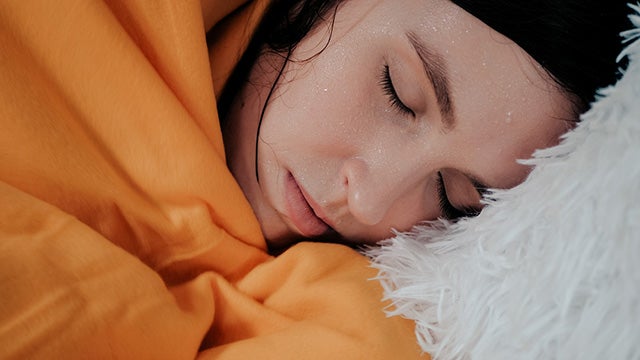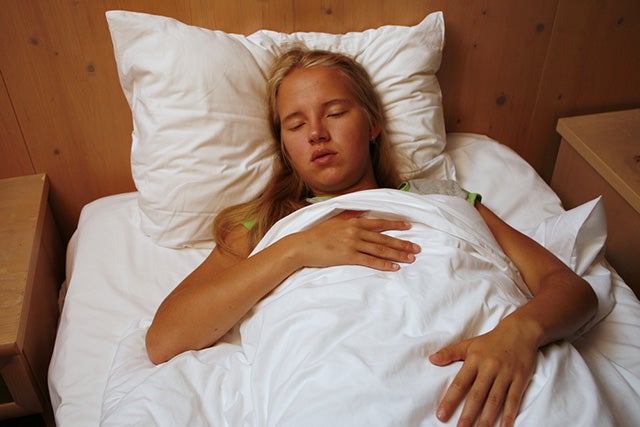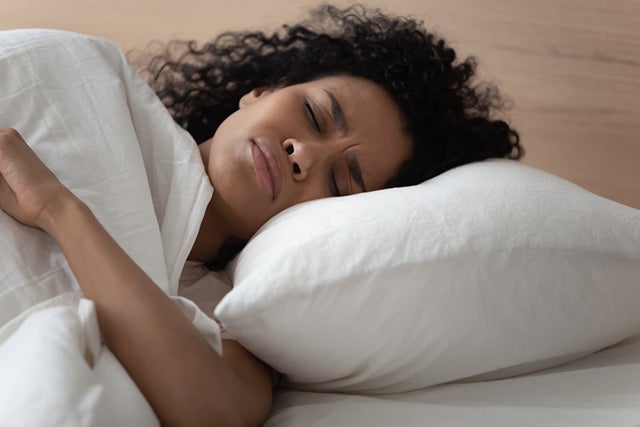Do you remember when you were eight years old and had that wild half-awake/half-asleep dream that you were a chicken roasting in the oven? (And then proceeded to throw up everywhere for the next two days?)
That was a fever dream.
But what causes a fever dream? Is it a normal occurrence? And how does it differ from a lucid dream or a nightmare?
Let’s talk about it.
Causes of Fever Dreams
Any time you get sick, you run the risk of experiencing some rather unpleasant fever dreams. These dreams occur when a fever is present (defined as either a temperature over 100.4°F or a temperature 2 degrees above your norm).
Your body develops a fever as a way of destroying the microorganisms that cause illness or infection. Because many bacteria and viruses perish in extreme temperatures, the fever helps your body get rid of whatever is causing you to feel unwell. But as anyone who’s been sick can tell you, having a fever is not fun. (Chills and sweating at the same time—how does that even make sense?)
While this overheating is crucial in recovering from your illness, the fever may also have some negative effects on brain function. Experts believe that this impaired cognitive function may promote fever dreams and alter your sleep patterns.
In addition, the part of your brain that controls temperature regulation (the hypothalamus) cannot work as effectively during REM sleep; this can cause your body temperature to become more unstable while you sleep and affect your overall sleep quality. The high temperature combined with your poor sleep (and related sleep interruptions) is thought to be another potential cause of fever dreams.
While illness is the most common reason for a fever to occur, our bodies can also overheat for a variety of reasons:
- Intense exercise
- Too much time outside in the sun
- Not drinking enough water
- Dressing too warmly
- Sleeping with too much cover
Even if your fever is not due to illness, it can still cause you to have fever dreams.
Characteristics of Fever Dreams
Compared to “normal” dreams (if such things exist), fever dreams tend to be more surreal and vivid in nature.
They most often represent nightmares and contain frightening or unsettling imagery. Common threads among fever dreams include spatial distortion, repetition, and lack of social elements or human imagery. Fever dreams sometimes deal with topics directly related to the fever (intense heat or sickness), though abstract concepts—such as time or objects—are also reported in these types of dreams.
You might find that your fever dreams are much easier to remember than your “normal” dreams, or that you remember more details about them. Fever dreams also tend to evoke strong emotions. While there’s no clear reason for this, experts believe that fever dreams are more memorable and “real” to us due to their strangeness.
Another factor here is that a fever might cause you to wake up more frequently during sleep (especially during REM, the lightest stage of sleep); we tend to remember dreams that we wake up from suddenly.
Fever Dreams, Lucid Dreaming, and Nightmares
By this point, you might be thinking that fever dreams sound an awful lot like typical nightmares or even lucid dreams. First, let’s define terms:
- A “nightmare” is a dream that contains negative or frightening imagery, themes, or emotions. They can occur even when you do not have a fever.
- A “lucid dream” is a dream that the dreamer is able to control. During a lucid dream, you realize that you’re dreaming. This type of dream can occur even with no fever present.
While fever dreams do share several characteristics with these other dream types, they’re not necessarily the same thing. A fever dream can be a nightmare and it can be lucid, but this is not always the case.
- Both fever dreams and nightmares tend to feature frightening, unsettling imagery and themes.
- It is possible for fever dreams to be lucid, though they often are not.
The major difference here is that fever dreams occur exclusively when one has a fever or an otherwise elevated body temperature. Both nightmares and lucid dreams can—and often do—occur outside of this context.
Prevention of Fever Dreams
Not keen on keeping fever dreams for company while recovering? Here are a few tips that may help to reduce your fever and consequently lower your chances of experiencing a series of fever dreams:
- Make sure to drink lots of water and other hydrating fluids.
- Bathe in warm or lukewarm water before bed.
- Focus on consuming foods that are easy for your body to break down and digest.
- Get lots of rest and plenty of sleep.
- Consider taking anti-inflammatory medication, such as ibuprofen.
Of course, these are only suggestions and may not work for every fever. If you’re experiencing extreme symptoms or if your fever reaches the 103°F threshold, you should see a doctor.
The Bottom Line on Fever Dreams
Fevers are a normal process within the body and can help eliminate harmful bacteria or viruses. However, they’re also associated with a range of unpleasant symptoms—including fever dreams. By now, you should be more familiar with:
- What a fever dream is
- What causes it
- How they differ from other dreams
- How to reduce your fever
Before you go: Make sure to drop us a comment describing your craziest fever dream! Also feel free to reach out with any questions you might still have; we’d love to hear from you.
Photo credit: WS.Design/Shutterstock; Stasonych/Shutterstock;
fizkes/Shutterstock; DimaBerlin/Shutterstock;
Poliakova Liudmila/Shutterstock; Iuliia Pilipeichenko/Shutterstock





